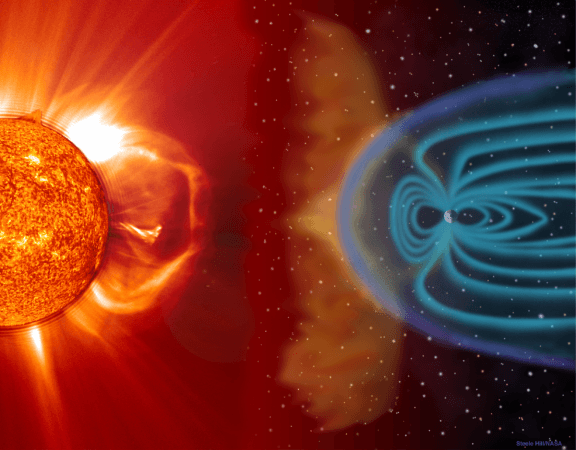
Astronauts traveling to space are not able to see or feel radiation. As humans will be soon sent to long spaceflights to Mars, NASA's Human Research Program (HRP) is researching the impact of these radiations on them with the aim to find out how exactly they get affected.
ALSO READ: NASA and ESA spacecraft track a solar storm: Top things to know [VIDEO]
Here are the top 7 things to know about this research:
1. The spacefarers are prone to high-energy galactic cosmic rays (GCRs), which are body harming remnants solar storms and supernovas such as the solar particle events (SPEs) and the coronal mass ejections (CMEs), even the spacecraft get impacted by these space weather elements. Acute radiation sickness caused by them need to be dealt with in the real-time.
ALSO READ: Human Colonization on Mars: Sex in space remains a major concern for scientists [VIDEO]
2. Other late-term effects of space traveling are cancer, cardiovascular diseases and impacts on the neural health, according to Tony Slaba, Ph.D., NASA research physicist.
3. Dosimeters and modeling techniques are used to find out how much energy is deposited in the bodies of the space explorers along with in-flight tools to try to estimate what type of biological effects they might be experiencing.
4. GCRs got extremely high energies, hence the strategies to shield the astronauts from it is quite difficult. pharmaceutical countermeasures seem to be a better option than providing the crew with a thick shielding.
5. NASA is devising tools for weather forecasting to provide a warning about SPEs in advance. It is easy to safeguard the crews from solar protons.
6. Numerous researches are being carried out by the NASA's HRP in order to validate biological countermeasures for the protection of the astronauts. An array of shielding design strategies is carried out by the HRP which includes ways to deplete the in-flight risks from solar storms and exposure from all sorts of space weather. The astronomers are assessing the best and the worst space weather in the history to come up with designs.
7. This research would be carried with further research on the effects space radiation will have on the health of humans. It will aid in carrying out space missions in which astronauts can travel farther from Earth than they have so far. These design strategies, coupled with the human research on the biological effects of space radiation will allow astronauts to travel farther from Earth than ever before, with the Red Planet being the next destination as embarked by NASA. The spaceflight might not be swifter than a speeding bullet but it will be comparatively safer for the astronauts.
Watch video:

















